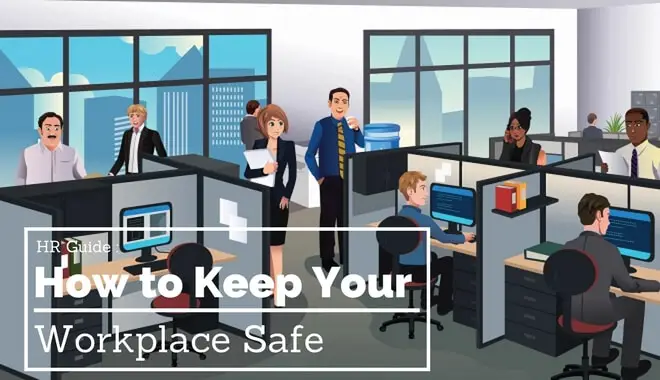
When it comes to business, health and safety are among the elements that tend to be overlooked. As an HR manager, it’s your responsibility to put the spotlight on these two factors as they can affect even the most talented employee’s job performance.
In reality, health isn’t always a domain of the physical. In a modern office, physical health is given equal attention as mental and emotional health. Mental health awareness might be mainstream, but there’s still a lot to be done when it comes to the office.
Don’t know where to start? Here are seven tips on how to keep the office safe. You can thank us later.
Table of Contents
Tip #1: Arrange Health and Safety Training
This one is a no-brainer. Safety training programs are actually mandatory for most companies and is required by law. In any case, conduct a health and safety training to prepare your employees for emergency situations.
Ideally, this should be done bi-annually to ensure that both old and new employees are up-to-date with the latest procedures, responses, as well as emergency exit and entry points.
A health and safety training session might not seem of importance to your co-workers, so make sure to highlight the following info to ensure their attendance and attention:
- Include statistics of office fire, gas leaks, and other emergencies to encourage attentiveness
- Collect emergency contact numbers during these sessions
- Introduce SOP in the event of fires, earthquakes, and civil unrest
- Dos and don’ts around potentially harmful machine in the office
- Emergency services hotlines
Tip #2: Establish Strict Safety Policies
You know what they say: the best way to keep accidents from happening is risk prevention. In order to make your workplace as hazard-free as humanly possible, you need to establish a system that every worker will follow.
Answer “what do I do when…” questions and print them out. Spread them to the office through email or as a memo posted in every bulletin board. Instead of being ambivalent with safety rules, it is better to have all procedures and rules organized and declared through writing.
Tip #3: Promote Legal Safety
Physical harm isn’t the only thing you should worry about as an HR manager. It’s your responsibility to ensure that employees are as satisfied as their employers. To avoid lawsuits and legal complications, it is crucial that your company conforms to local and national employee regulations.
When in doubt, consult company lawyers before acting on a whim. The same goes for upper management. Whenever you think administrators should be advised against a certain behavior or action, do so as you are saving your company incredible assets.
Tip #4: Build Trust Among Your Co-workers
Tension is a hazard against productivity and camaraderie. When left unattended, these could spiral into lawsuits, and it’s your job to prevent it from happening.
Make sure that you establish a good rapport with your fellow co-workers. It’s your job as HR to ensure that they are working in a physically, emotionally, and mentally safe atmosphere.
Instead of using formal interviews to achieve this, try starting a casual conversation with them. Invite your co-workers somewhere after work to chat.
This way, you will earn their trust and see things from their perspective. When the need arises, having a trustful employee can come in handy when it’s time to solve future office disputes.
Tip #5: Reduce Work Stress
Reducing stress in the workplace has two benefits: you are able to keep your co-workers healthy and you are able to keep them productive. Work-related stress is one of the leading sources of depression in the US, and amounts to disturbing suicide rates.
The workplace has a bad rep for being a competitive arena. You can change the way people view the office by introducing the concept of communal or group incentives, rewards, and benefits while encouraging eagerness and hard work without the extra pressure.
Tip #6: Assign A Safety Leader
In most companies, the safety leader is usually the HR manager. However, appointing a non-HR employee as the safety leader will allow you to focus on more urgent matters, and will give the appointed employee a superb sense of leadership and responsibility.
When choosing a safety leader, it’s crucial to pick someone who is reliable. Here are some things to consider when choosing your own safety leader:
- Attendance
- Alertness
- Ability to think outside the box
- Ability to successfully assess risks
- Courage
- Experience with first aid
Tip #7: Look Into The Company’s Health & Business Insurance
While insurance matters are technically outside your jurisdiction, understanding your company’s business insurance and employee health insurance and benefits would give you a leverage when settling office disputes.
During accidents, knowing the coverage policies and the standard procedures required by insurance companies will allow you to respond appropriately and coordinate your co-workers into safety.
At the end of the day, health and safety pertain to an individual’s working conditions and his or her ability to properly operate in a safe environment.
You don’t have to save ten people from a building fire to feel accomplished. You are already affirming their health and safety just by ensuring that every one of your co-workers see the work as a welcoming, non-threatening environment.